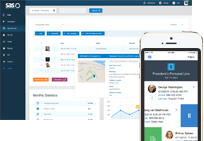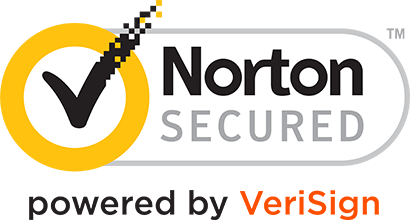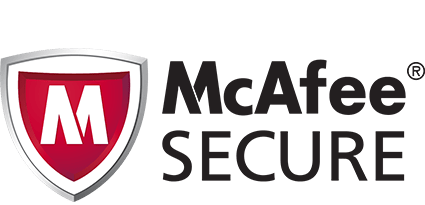- Log In
- Support
- Company
- Contact Us
- Live answers @ 1-888-532-4794
Small Business Answering Services: 9 Pitfalls to Avoid

Today, it’s easier than ever to outsource your customer support. Just google small business answering services and you’ll find pages of companies who can help. But just because you can find an answering service, it doesn’t mean you’re guaranteed a stellar outsourcing experience.
If the company you’re using doesn’t have the right environment set up for their agents to thrive, or if your expectations aren’t aligned with what the answering service can do, you’re going to set yourself up for failure.
If you’re looking for a small business answering service, your first step should be researching the marketplace to determine which service you feel would be the best fit for your business. Once you’ve found the one, you’ll need a clear plan so that as you start the onboarding process, you’ll ensure your business needs are being met.
Let’s look at 9 pitfalls that are common for small businesses who are outsourcing to answering services for the first time to make, and ways to avoid them. Ultimately, you want to work together with your answering service to create an outsourcing solution the stakeholders on your team can be proud of.
Pitfall #1: Adding too many FAQs
Adding company and product information to your Frequently Asked Questions is really great! Until it’s not. There is such a thing as going overboard with “too much” data. And you don’t want agents jumping ship when they see your FAQs because there are too many or they’re poorly organized. So, sticking to the basics will ensure that agents aren’t scrolling through endless pages of detail. It’s not only a challenge for them, but it’s bad for your wallet.
The more time agents spend looking for answers, the more live operator time they eat up – and that may lead to a much higher monthly invoice than you had anticipated. If a caller has in-depth questions about your offerings, it is generally better to simply deliver a message rather than wade through an ocean of info. Not only do beefy FAQs lengthen calls, but it makes the operator sound less professional when they don’t have an immediate answer.
The solution
I recommend keeping your FAQs short and sweet and letting you and your staff handle the nitty-gritty questions. While FAQs will vary depending on the type of business you run, here are some examples of simple questions the operators can answer without having to forward a message over to you.
- What are your business hours?
- Where are you located?
- What kind of services do you provide?
- What are your prices?
- Do you offer after hours service?
- Is there an after hours fee?
- Do you accept insurance?
- What types of insurance do you accept?
Pitfall #2: Forgetting to forward calls when you need extra help
Most telephone answering services provide virtual receptionist support 24 hours a day. So, just because your accustomed to only forwarding your calls after hours and on weekends, those aren’t the only times you should be using a service. You can use them any time you need some extra help, even during business hours. For example, imagine it’s the morning after a large snow storm and the phones are ringing like crazy. Your receptionist is trying to answer every call but telling each potential customer to hold. One by one the callers give up and slowly but surely, your opportunities of new business have flown right out the window.
The solution
The easiest way to solve this is to remember that your answering service is available whenever you need them – so it’s up to you to remember to forward calls when you office is overwhelmed. If you’re looking for a more automatic solution, you can explore something called conditional call forwarding.
Instead of drowning your over-worked receptionist, you can set up conditional call forwarding so that any calls your receptionist can’t get to, will forward right over to the service. With conditional call forwarding configured, each caller will reach a live voice, more leads will be captured, and your receptionist will stop pulling out her hair!
Pitfall #3: Leaving an open-ended greeting
Creating a call script that works for both your business and your answering service doesn’t have to be complicated. Actually, it can be quite simple by first starting with a strong greeting. While a generic opening can work, an open ended question like “how can I help you” allows the caller to take control of the call and can seriously eat up time. Instead, driving questions can help steer the call and allows the operator to maintain control over the conversation.
The solution
If you know 90% of the calls that are coming in will be for one particular service or objective, you may want to have your operators ask “Are you calling for a quote?” or “Are you calling to schedule an appointment?” This way, your operators can easily determine which way the call is supposed to go and seamlessly gather the callers information. Businesses that handle urgent requests like Medical, HVAC or Property Management companies may also want to ask callers upfront if they’re calling in regards to something urgent. That way they can ensure urgent calls are being handled as quickly and efficiently as possible.
Pitfall #4: Foregoing automated services
Answering services are great at giving your callers a live voice to talk to 24/7. Don’t think that just because you are using an answering service, you shouldn’t be thinking about using automation. Most services will also offer some type of voicemail or IVR automation, and they’re great for automating protocols that are currently taking up too much of your staff’s time. IVR, or Interactive Voice Response, is a tool that many businesses use to help direct calls while also allowing customers to help themselves. For small businesses with a limited budget, you may not want to spend as much money having your operators answering these questions when an IVR can do it for much less.
The solution
There are many different ways to incorporate automated services to work in tandem with live receptionists. For example, you may want to set up an option for your Spanish callers to press 2 to be connected with a bilingual representative, or you may want to set up an option for callers who are having an emergency. IVRs are also great for simple calls like a customer wanting to know your business hours or location.
Automation can also be used via virtual queuing systems, by setting up a call back feature with your answering service. Call back options can be automatic, where the system automatically calls back callers who hang up while in the queue, or they can be manual, where callers are given the option whether or not they want a call back. If they do, they can hit a number on their dial pad, and the system will hold their place in line.
Pitfall #5: Forgetting to place test calls
Your answering service handles their own quality control, but that doesn’t mean you shouldn’t help control the quality with respect to your own account. Placing test calls is a great way to get a feel for what your customers will experience when they call, and it also offers an opportunity to iron out any kinks and fine tune the whole process. If you’re worried about eating up your own minutes while placing test calls, then don’t worry! Most if not all answering services will offer some sort of free trial period, which is a great time to place free test calls and make updates prior to going live with your customers.
The solution
We suggest placing test calls in the following situations:
- When an update has been made to your script: If you or your answering service has updated your scripting protocol, it’s a good idea to place a test call to ensure the updates were made correctly and that the script flows naturally for the operators.
- When you forward your lines: Placing a quick test call whenever you forward your line(s) to your answering service is a good way to confirm your line(s) are forwarded correctly. If you haven’t forwarded your line(s) correctly, callers may get an error message and be left hanging in limbo.
- When you’ve added a new upfront greeting: After updating your custom upfront greeting, call your line to hear how it sounds!
Pitfall #6: Leaving your script generic
Along with adding an IVR and driving question to your account, there are other ways your answering service can help screen callers. For instance, if you have a list of requirements for certain types of calls, we can use this to determine if you need to receive a message or not.
The solution
Here are some examples of how an answering service can help screen your calls.
- Asking callers for their email address: If you require an email address to correspond with your customers, your service can ask for this information. If it’s provided, the call will continue but if it’s not, the operator can inform the caller that one is needed to proceed. If the caller refuses, the operator can politely end the call.
- Asking callers if they accept a service fee: If your business requires a service fee prior to scheduling an appointment, your answering service can screen callers accordingly. If they accept the fee, the operator can continue with the call. If they don’t, the operator can end the call but remind the caller to reach back out if they change their mind.
- Screening for specific types of insurance: If your medical practice only accepts certain types of insurances, it’s a great idea to have your service screen callers. That way your calendar doesn’t get booked for appointments that shouldn’t have been scheduled in the first place.
Pitfall #7: Forgetting to keep your On-Call schedule updated
Even your best employee can’t work 24 hours a day, 7 days a week, 365 days a year. They may be dedicated to your company, but they’re no Clark Kent. This is why having a rotating on-call schedule that your answering service can follow is great for not only helping cut down costs, but evenly delegating work responsibilities. A good answering service scheduling system will allow you to make changes whenever you need to through an online portal or a mobile app, and will allow you set your schedule for days, weeks and even months in advance.
The solution
Upon creating an on-call schedule, you’ll be required to configure a Default Group, which is who our system will reach out to in the event your schedule(s) have expired. Having a Default Reach option will always ensure someone is being reached, even if it’s not the person who is currently on-call.
Pro tip: Whenever you make changes to your in-house schedule, always remember to keep your answering service updated so they can ensure the right person is always being reached!
Pitfall #8: Scheduling appointments yourself
In order to cut down on phone calls, many businesses have integrated systems that allow customers to schedule their own appointments online. The less appointment calls that come in, the less time employees are on the phone, which means more time they can dedicate to other projects. However, just because it’s available, doesn’t mean every customer will use it. In fact, many customers still prefer to speak with a live person over scheduling online, which means you still need to have someone available to take those calls.
The solution
Having your answering service schedule appointments for you is a great way to give your customers that personal touch and also allows your in-house employees to step away from the phones and focus on other tasks. Many services either offer their own scheduling software, can use a software you’ve already implemented, or integrate with a web-based platform like Google Calendar. In addition, they may even be able to follow up with appointment confirmation emails, schedule particular services, or help new patients fill out intake forms.
Pitfall #9: Not reaching out when there are issues
Just like everything else in life, there will always be an adjustment period for things that are new to you. If your answering service isn’t living up to the hype or dropped the ball in some capacity, the best thing to do is to try and work through it together. Otherwise, you might prematurely move on to the next service without fully understanding what went wrong the first time around. If the agents were messing up, it could have been because the call script was too confusing.
The solution
Working with your answering service and bouncing ideas off of each other is a great way to create the best possible experience for both you and your callers. Ultimately, answering services want to help your business grow. In order to do that, there needs to be an open door of communication.
We suggest scheduling periodic check-in calls with Customer Support, so they can review your scripting protocol, answer any questions you have, or address concerns or issues you may have encountered.
Categories
- Advice (32)
- Answering Service 101 (18)
- Best Practices (10)
- Call Center Jobs (6)
- Call Center Software (20)
- Comparison (2)
- Customer Service (30)
- Funny (31)
- Holidays (19)
- Industry Hacks (19)
- Infographics (53)
- International (1)
- Medical (8)
- News (12)
- Phone Etiquette (2)
- Phones (14)
- Pricing (8)
- Quizzes (3)
- Receptionist (11)
- SAS Products (29)
- Scripting (4)
- Services (5)
- Small Business (25)
- Starting Up (7)
- Tips and Tricks (19)
- Uncategorized (1)
- Videos (19)
- Workplace (6)
Recently writen
- Call Center Script Best Practices: Advanced Script Block Tips to Optimize Your Answering Service
- January 2025 Release Notes – Adjustments to Call Details Timeline, New Scripting Updates, Live Transcription, and more!
- April 2024 Release Notes – Voicemail Greetings, Ability to Access Websites With a Username and Password, and more!
- March 2024 Release Notes – New Add-On, Settings Revamp, and more!
Follow Us
How about a demo?
We'll show you how our web portal works and answer any questions you have about SAS.
Schedule a demo







